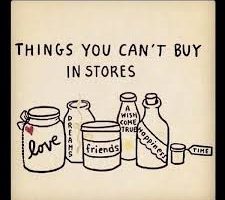Narcissists and Anti-Social predators are notorious for manufacturing chaos to worm their way closer to targeted abuse victims. They will set the stage for a target to suffer extreme emotional distress, then will show up mysteriously to “save the day”.
It is a sneaky brainwashing trick to manufacture chaos, then lie to a target in order to take advantage of their innocence in order to let the narcissistic predator have their way. But it’s not just lying to sneak into a man or woman’s bed that is most troublesome. It’s the behaviors they use to micromanage the emotional body of their targets once they have their foot in the door and have free access to manipulate them.
Alternating good-bad treatment is one of the key warning signs you are involved with at best a person who is a situational abuser — but one with a dangerous personality type likely to fit diagnostic criteria for having a Cluster B personality disorder.
It goes without saying that a person who is being brainwashed and lied to by a predator is likely to start to be mistrustful of any friend or family member who tries to save them. Do not fall into a rescue mode to save a person who willingly engages in maintaining a relationship with ANY person known to routinely exhibit a propensity for lying, abusing others, or who in any way meet diagnostic criteria for having a Cluster B personality disorder.
The predator’s victim is likely to feel on top of the world during any love-bombing and or hoovering phase. Their addiction to that emotional and psychological high that tends to happen chemically within the brain is their problem, one from which they cannot be saved.
A true victim wakes up to abuse and will not tolerate things like intermittent good-bad behavior a narcy person dishes out in order to keep their possessed victim constantly off-center yet actively fully psychologically and emotionally engaged. Compulsive attention seekers with a need to control, the N personality manipulates.
If a person has an S (Sociopathic), Narcopath (NP), or P (Psychopathic) tendencies, their attempts to destabilize the mental health of their “precious” target, expect massive disparity between the things they do or say in public and private.
The Abuser — regardless of personality type — will tell a victim in one moment that they are a soul mate, the love of their life, and that no one will ever love them or be as good for them as they are; then, they will cheat, lie, rage, accuse, devalue, ridicule, undermine, gaslight, and do or say any nasty and/or positive thing they can tell a victim to keep them walking around on eggshells. Pulling the rug out from under other people’s feet is their specialty.
The Narcissistic Cycle of abuse — one that resembles the power and control wheel most domestic abuse victims know thanks to domestic violence awareness classes — includes three stages (four, if you count hoovering for attention while seeking to dominate former love interests). The first is known in pop psychology circles as the love-bombing phase, one where the plotting aggressor spots a target then sets out to win their trust and affection while carefully calculating, lying, misrepresenting themselves and their intentions, and more.
It is the phase where the great con is actually occurring. The great con — in this particular instance — can be mild (with the predator having a mild interest in the target but no ability to behave in such a way with them or towards them that is either honest or ethical) to wild. In extreme cases, predators actually commit LOVE FRAUD, tell their target absolutely everything they want to hear rather than anything that is true in order to actively deceive and manipulate them.
In love fraud cases, men and women alike find themselves at the end of a relationship feeling not only like they have been on an emotional roller coaster (due to the intermittent good-bad treatment cycles), but they are broken almost inevitably in spirit.
Not knowing who to trust after the deepest level of human betrayal aside from child abuse and molestation, victims develop health problems related to C-PTSD, suffer severe PTSD trigger event formation, and tend to find themselves having been totally destroyed financially as well as socially, emotionally, personally, and professionally.
In the worst cases, the victims are trauma bonded so thoroughly to their abuser they show signs of Stockholm Syndrome, oftentimes failing to protect their own needs or doing what is right (such as reporting domestic violence, cyber-bullying, or stalking incidents to the police in an attempt to protect the abuser from himself or herself).
They believe the gaslighting myths Flying Monkey friends and family of the Abuser tell them while enabling — that there are two sides to every story — without considering the very real fact that when one person is LYING, there really is only the subjective emotional experience of the victim, and the truth about what happened.
The con artist with a mean streak of self-promotion actively manipulating anyone he or she can in order to avoid taking personal responsibility for any negative actions they have intentionally chosen to be doing (or neglectful, socially irresponsible position they are truly guilty of actively assuming) is not a side of the story, just more lies.
Trauma bonding encourages the victim to put the abuser’s needs on par with or above their own best interest.
According to NarcissisticBehavior.net, “The second feature of traumatic bonding is that the narcissist uses “good and bad treatment” intermittently. At times the abuser maltreats the victim to the point of terrorizing them, and then at other times they show them acts of kindness; showering the victim with love, care, and attention, even promising to never abuse them again.
This has the effect of subjecting the victim to alternating states of emotions where they go through periods of aversive/negative arousal, and the relief/release associated with aversive arousal (Dutton/Painter), thus, alternating between good and bad conditions. This triggers the victim into a regressive mode, and they return to childish infantile patterns of behavior of bonding with the aggressor.”
The article, titled “What Is Stockholm Syndrome” is totally worth a read for any abuse victim. It’s especially helpful to share with any person still living under the spell of an Abuser, noting that the following concepts can and should be introduced to them for the purpose of recognizing that trauma bonding and brainwashing tactics were actively used against them. It’s a huge thing, paying attention to the forensic psychology clues — as they are the breadcrumb trail back to romantic and psycho-social sanity.
Key things to remember about trauma bonding and intermittent good-bad behaviors of a narcissistic person and abusive predator are as follows, per Narcissistic Behavior Net:
• Stockholm Syndrome is the emotional trauma bonding of the victim with their narcissist abuser in order to survive their ordeal of living like a hostage under threat.
• Under these conditions both Cognitive Dissonance (discomfort caused by holding conflicting ideas simultaneously) and Stockholm Syndrome (the return to childish or infantile patterns) develop on an involuntary basis.
• In Stockholm Syndrome, what occurs in the victim is the same principle that is seen in the developing infant. Both infant and victim are in a fearful world. In order to survive, both need to develop an emotional attachment to a caregiver that displays power and compassion. The child turns to their caregiver for bonding, where they get a mix of discipline and loving; While the victim turns to their narcissistic abuser (through the Trauma Bonding), where they experience the power imbalance and intermittent good-bad treatment.
• It is the psychological infantilism in the victim that becomes responsible for creating an inner drive in the victim to cling to the narcissist and resent police or family rescue attempts.
• This results in the victim seeing from the perspective of the abuser, putting them first, settling for small kindnesses, and losing their sense of self.
• This surrendering of the self to the narcissist results in the victim being totally dependent upon their abuser.
• The narcissistic abuser takes on the role of the parent, while the narcissistic victim is denigrated to that of a child.
As always, reaching to your local Victims Advocate, social services agency, or Domestic Abuse Shelter personnel for more information about how to protect yourself from predators in your own home or workplace is the right course of action when and if a predatory person has been detected. Be careful about what advice you take or listen to, as generic self-help advice like “go to marriage counseling with your abuser” can be a lethal physical, emotional, or psychological choice. Seek out people who are well educated about Cluster B personality disorders in general and who specialize in treating people with C-PTSD.
Ask your physician to talk with you about C-PTSD and the symptoms of living through pervasive trauma and repetitive abuse. See if your health history matches up and if yes, understand you are likely to benefit from a mild anxiety medication rather than something that will mask your symptoms (in the event you have been told you are suffering from sourceless anxiety and depression).
Understand the source of emotional pain and physical discomfort is living under the thumb of an oppressive abuser. Flying Monkeys giving bad coping and life skills advice compound the problem.
If you have Cognitive Dissonance about YOUR abuser, start paying attention to what triggers it to logically or emotionally pop up — the need to defend, glorify, or in any way protect them.
Do the introspective work necessary to objectively analyze events and determine if the Abuser set you up from day one to fall for them using Love Fraud techniques and figure out how to let your feelings dissipate naturally.
Thinking of the person you thought was a certain way but turned out to be the opposite in terms of them being dead is actually quite a helpful coping mechanism in such a case, as it allows you to love the image and mourn the loss of the fictional relationship without being drawn to have anything at all to do with the actual living person.
Take every item that reminds you of the abuser and box it up, out of your vision. If there are items of value or sentimental import, box them up, tape them shut, and write whatever you need to on the outside of the box to make sure you never open them until such time you A) care enough to be bothered to go through them or B) you have desensitized yourself enough to their charms that when you think about the good times you fail to be tempted to engage in more cognitive tom-foolery.
That way, both good memories and bad will be out of sight and out of mind without some grand display of hyper-dramatized pitching stuff out windows or setting things on fire in a yard pop culture tells us so many abused and or abusive men and women seem to believe they are entitled to today. Give the abuser back whatever is theirs, then encourage them to go on their merry way.
It’s the 21st century. Ain’t nobody got time for having to deal with untrustworthy people hoovering after abusing or having to play mind games and lie to people in order to self-promote and get their way. Only nasty people are the kind who would be able to lie to their love interest. Who needs to be with a person like that? Only a person with a deep-seated streak of masochism, healthy and “in the know” people some people say.





